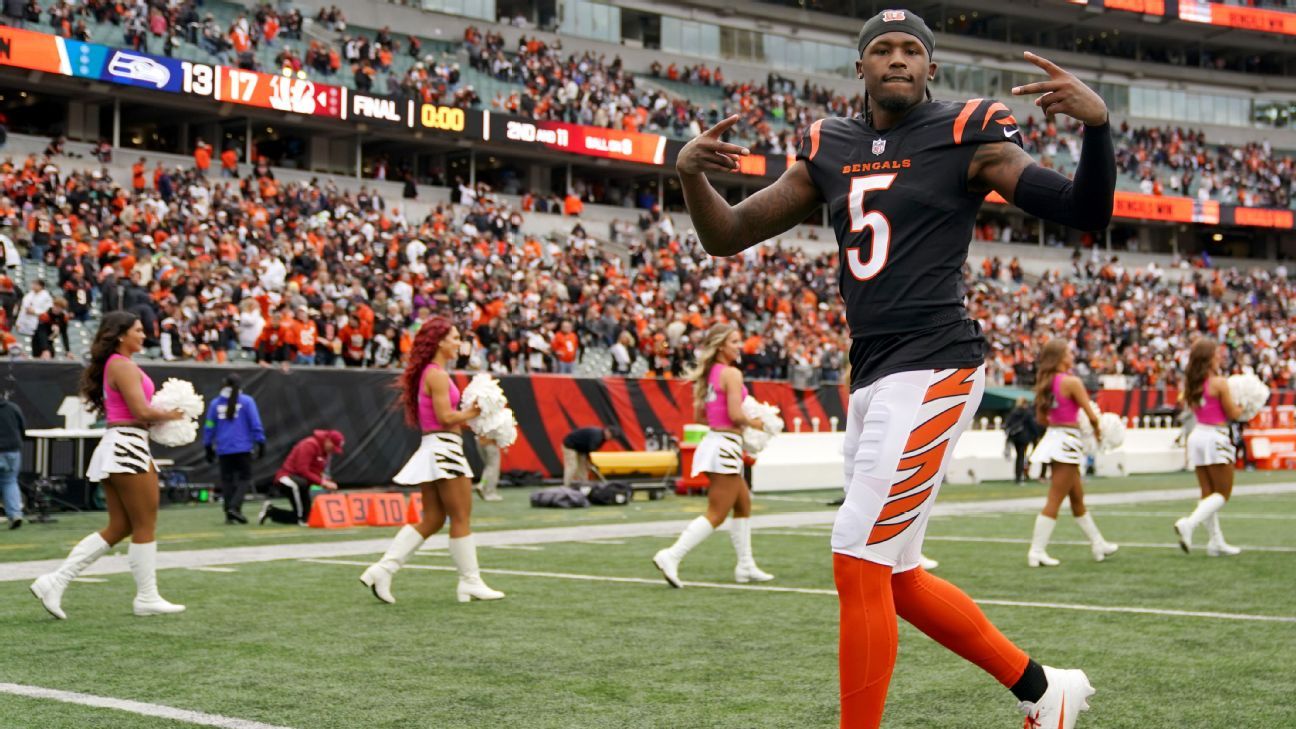On February 20, the NFL’s two-week franchise tag window opened. In this year’s window:
Here’s everything you need to know about franchise tags and how they work.
What is an NFL franchise tag?
The franchise tag is a tool that NFL teams can use to keep their best players from leaving in free agency. If a player is tagged, they receive a one-year tender.
What are the different types of NFL franchise tags?
There are three types of franchise tags: the non-exclusive tag, exclusive tag and transition tag.
NON-EXCLUSIVE TAG: This tag allows the player to sign an offer sheet with another team. The original team has the right to match the offer or receive two first-round draft picks in compensation if the player leaves. This is the most common type of tag.
EXCLUSIVE TAG: This tag completely binds the player to his team. His agent is prohibited from seeking an offer sheet.
TRANSITION TAG: This tag works like the nonexclusive franchise tag, except it only provides the original team the right to match the other team’s offer. If the original team decides not to offer a matching bid, it gets no compensation when the player leaves.
Once a player is tagged, the two sides have until July 15 to sign a long-term contract or, by NFL rule, the player will play on the one-year deal (or hold out).
How much do players earn on the franchise tag?
The value of the tag varies from position to position (and the type of tag).
The value of the non-exclusive tag is the average of the top five salaries at the player’s position over the last five years or 120% of his previous salary (whichever is greater).
The value of the transition tag is the average of the top 10 salaries at the position.
QUARTERBACKS: $38,301,000 (non-exclusive), $34,367,000 (transition)
RUNNING BACKS: $11,951,000 (non-exclusive), $9,765,000 (transition)
WIDE RECEIVERS: $21,816,000 (non-exclusive), $19,766,000 (transition)
TIGHT ENDS: $12,693,000 (non-exclusive), $10,878,000 (transition)
OFFENSIVE LINEMEN: $20,985,000 (non-exclusive), $19,040,000 (transition)
DEFENSIVE ENDS: $21,324,000 (non-exclusive), $19,076,000 (transition)
DEFENSIVE TACKLES: $22,102,000 (non-exclusive), $18,491,000 (transition)
LINEBACKERS: $24,007,000 (non-exclusive), $19,971,000 (transition)
CORNERBACKS: $19,802,000 (non-exclusive), $17,215,000 (transition)
SAFETIES: $17,123,000 (non-exclusive), $13,815,000 (transition)
KICKERS/PUNTERS: $5,984,000 (non-exclusive), $5,433,000 (transition)
The value of the exclusive franchise tag is the average of the top five salaries at the player’s position for the current year or 120% of his previous salary (whichever is greater). These numbers aren’t available until after restricted free agency ends.
Teams can only tag a player three times, and the value of the tag increases each time. The second time a player is tagged, they receive a 120% raise over the previous season. The third and final time a player is tagged, they receive a 144% raise.
Who are some other recent examples of tagged players?
In 2023, six players received the non-exclusive franchise tag: Lamar Jackson of the Baltimore Ravens, Saquon Barkley of the New York Giants, Evan Engram of the Jacksonville Jaguars, Josh Jacobs of the Las Vegas Raiders, Daron Payne of the Washington Commanders and Tony Pollard of the Dallas Cowboys.
Jackson and the Ravens eventually agreed to a five-year contract worth $260 million. Engram and the Jaguars inked a three-year deal worth $41.25 million. Payne and the Commanders worked out a four-year contract worth $90 million. Jacobs held out and refused to sign the franchise tag, but he and the Raiders ultimately agreed to a one-year, reworked deal worth $12 million before the start of the regular season. Barkley and Pollard played on the franchise tag.
Where can I find more NFL coverage from ESPN?
Check out ESPN’s NFL coverage, including breaking news, in-depth analysis, features, mock drafts, free agency predictions, fantasy football content and more.

